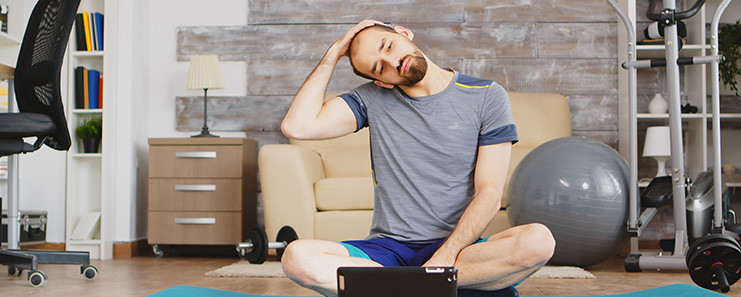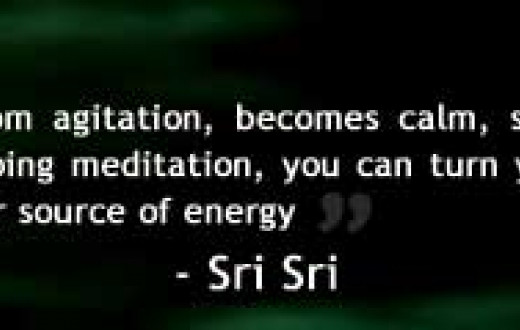Spending too many hours hunched over a computer or a smartphone often triggers muscle strains. As with other joints in the body, neck joints tend to wear with age. Nerve compression can be one reason for neck pain and injuries can be the other. The above-mentioned are a few reasons for neck pain, to start with. Neck pain may also have causes that aren’t due to an underlying disease. Examples include prolonged straining, sleeping in an uncomfortable position, stress, chiropractic manipulation, or wearing heavy necklaces.

The three most common reasons for neck pain include:
Muscle strain: A stretching or tearing of a muscle or a tissue connecting muscle to bone.
Cervical radiculopathy: A pinched or irritated nerve in the neck causing pain, numbness, or weakness radiating into the chest or arm.
Arthritis: Inflammation of one or more joints, causing pain and stiffness.
Causes
Your neck is sore. It hurts to move your head. Are you sleeping wrong? Is it stress or a result of climbing that ladder to clean your gutters? Let's get to the bottom of those real pains in your neck. When your neck is sore, you may have trouble moving it, especially to one side. Many people describe this as having a stiff neck. If neck pain involves nerves, such as a muscle twinge pinching on a nerve or a slipped disc pressing on a nerve, you may feel numbness, tingling, or weakness in your arm, hand, or elsewhere. A common cause of neck pain is muscle strain or tension. Usually, everyday activities are to blame.
Such activities include:
bending over a desk for hours, hunching in place,
having poor posture while watching TV or reading,
placing your computer monitor too high or too low,

sleeping in an uncomfortable position,
twisting and turning your neck in a jarring manner while exercising,
or lifting things too quickly or with poor posture.
Other causes include:
Medical conditions, such as fibromyalgia,
Cervical spondylosis,
Ruptured disk,
Small fractures to the spine,
Sprains,
Spinal stenosis,
Infection of the spine,
And, cancer that involves the spine.
Cure
Generally, you can treat minor neck pain at home. Simple posture improvements, sitting straight with shoulders held back, driving with arms on armrests, and avoiding carrying shoulder bags, can make a great difference. Take breaks when sitting in front of video displays or holding a mobile.

For pain, you might try over-the-counter pain relievers. Slow range of motion exercises, moving your head up and down, side to side, from ear to ear, can gently stretch your neck muscles. Applying heat beforehand may help.
Good sleep position is especially important with the head aligned with the body. You can try sleeping with a special neck pillow for that. You may want to see a doctor if your symptoms linger for longer than a week of self-care, or if you have numbness, tingling or weakness in your arm or hand, or if your pain was caused by a fall, blow or injury.
Prevention
You can help prevent neck pain or keep it from returning in many ways. Use relaxation techniques and regular exercise to prevent unwanted stress and tension in your neck muscles. Learn stretching exercises for your neck and upper body; stretch every day. Use good posture, especially if you sit at a desk all day, keep your back supported, and adjust your computer monitor to eye level so that you don't have to continually look up or down. Talk to your doctor if the pain persists. You would not want to go through neck pain all your life.
Home Care
Treatment and self-care for your neck pain depend on the cause of the pain. You will need to learn.
1. How to relieve the pain
2. What your activity level should be
3. What medicines you can take
For minor, common causes of neck pain:
Apply heat or ice to the painful area. Use ice for the first 48 to 72 hours, and then use heat after that.
Apply heat with warm showers, hot compresses, or a heating pad. To prevent injury to your skin, DO NOT fall asleep with a heating pad or ice bag in place.
Stop regular physical activities for the first few days. This helps calm your symptoms and reduce inflammation.
Do slow range-of-motion exercises, up and down, side to side, and from ear to ear. This helps gently stretch the neck muscles.

Have a partner gently massage the sore or painful areas.
Try sleeping on a firm mattress with a pillow that supports your neck. You may want to get a special neck pillow.
Neck pain is one of the most common complaints of patients seeking medical attention. A variety of spinal structures obscure symptoms. An accurate diagnosis provides the best opportunity for effective treatments. The building blocks for successful therapeutic interventions include controlling pain and inflammation while at the same time educating the patient about the injury, the treatment objectives and the prognosis. It is essential to view the patient as a whole to institute physical, pharmacologic, behavioral and interventional treatments. This is in the broad context of achieving what is best for the patient's physiological and psychological well-being.
Did you know that every body part is connected to the spine? Our spine care experts in a Free Webinar on Spine Care will help you to learn to maintain a healthy spine and correct your spine issues.




































